New York’s Old Master sales come round in January with a bit of point to prove. They arrive in the wake of a year that shattered all kinds of records, largely on the strength of the market for Impressionist and modern works, and in the face of reports that the Old Masters market is on its last legs. ‘There are no A-plus works by major artists left’ on the market, art advisor Todd Levin told the Art Newspaper earlier this month – they’re all in museums. And as a result, the argument goes, auction houses are going to have to learn to make do with second best.
Yet Sotheby’s provides a pretty solid riposte. Peter Paul Rubens was in his early 30s when, having recently returned to Antwerp from an eight-year stint of travelling and working in Italy to attend his dying mother, he was appointed court painter to the Habsburg rulers of the Low Countries in 1609. In the years that followed, inspired by the example of Caravaggio and other stars of the Italian baroque, Rubens embarked on a number of ambitious biblical scenes – among them the vast Adoration of the Magi now in the Prado, and the Samson and Delilah now in the National Gallery in London. To their number can be added The head of Saint John the Baptist presented to Salome – which achieved a record for the artist back in 1998, when, having long been thought lost, it sold at auction for $5.5m. It returns to the block with an estimate of $25m–$35m.
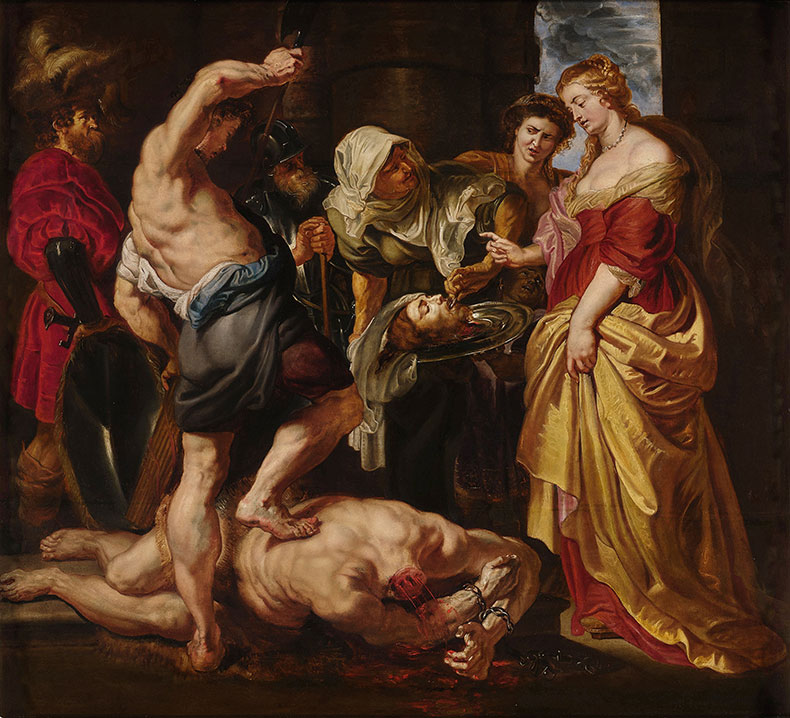
The Head of John the Baptist Presented to Salome (c. 1609), Peter Paul Rubens. Sotheby’s New York (est. $25m–$35m)
It is a gruesome work, dripping with gore and bristling with brawn. The muscles of the executioner ripple as he sheathes his sword; the even more muscular corpse of John lies collapsed under his feet. As a counterpoint, the figure of Salome stands dispassionately still, clutching voluminous satin to her side. Like Samson and Delilah, it is a cautionary tale of feminine cunning. It was probably painted to be hung in an intimate setting, although not much is known about the circumstances of the commission; it was recorded in the inventory of the Spanish Habsburgs in 1666.
It is a highlight of one of the best collections of Italian baroque paintings remaining in private hands, begun by Mark Fisch and Rachel Davidson in the mid 1990s; the auction on 26 January includes ten works consigned by the divorcing couple, among them masterpieces by Guercino and Orazio Gentileschi. In the same sale, but with a rather different provenance, is a compelling work by Bronzino; misattributed and thought lost by scholars, it was recently restituted by the German government to the heirs of Ilse Hesselberger, a Jewish socialite from whom it was stolen by the Nazis. Sotheby’s is calling it ‘possibly a self-portrait’ – a theory to which a puzzling verse riddle that the sitter is here engaged in composing, which begins ‘the image thinks to write but in fact it does not write’, may lend some support, given that Bronzino was an accomplished poet as well as a painter. $3m–$5m is expected.
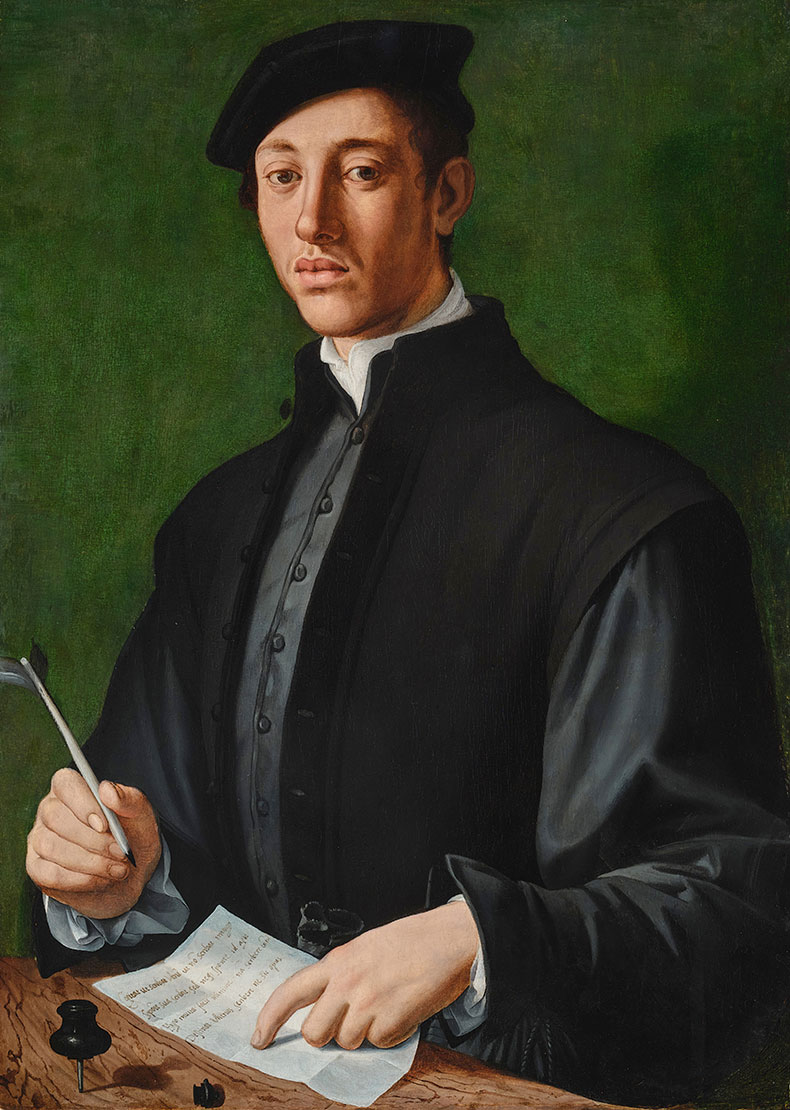
Portrait of a man facing left with a quill and a sheet of paper, possibly a self portrait of the artist (c. 1527), Bronzino. Sotheby’s New York (est. $3–$5m)
J.M.W. Turner is perhaps less well regarded a poet than Bronzino, but in 1808 he was moved to pen an ode ‘On the demolition of Pope’s Villa at Twickenham.’ An early draft begins:
O Lost to honour and the sense of shame
Can Britain so forget Pope’s well earned fame
To desolation doom the poet’s fane
The Pride of T[wickenham’s] bower and silver Thame….
More successful was Pope’s Villa at Twickenham, which Turner was painting at the same time. Here, invective against the destruction of the great poet’s home gives way to quiet contemplation; as Andrew Wilton has pointed out, the goal is to ‘celebrate genius rather than deplore vandalism’. A flock of sheep rests on the banks of the Thames; behind them, the water is still, reflecting the gleaming white of the house in the background. The whole appears at first as an Arcadian idyll in the manner of Claude Lorrain – you have to squint to see that the house is roofless and windowless, and blighted by scaffolding, while in the foreground, a group of men are trying to work out what to do with the capital of a pilaster, a relic of the house behind them. It is a careful, considered – but nonetheless heartfelt – lament for the loss of artistic heritage. The painting immediately sent Turner’s contemporaries into superlatives; Thomas Lawrence took it as evidence that Turner was ‘undisputedly the first landscape painter in Europe’, while John Landseer went further: ‘No landscape-painter has ever before so successfully caught the living lustre of Nature herself,’ he wrote. It comes with expectations of $5m–$7m to Christie’s Old Master Paintings sale on 27 January – an auction which also includes a similarly luminous landscape by Watteau ($2.5m–$3.5m) and a compelling double portrait by Goya ($15m–$20m). There is a good chance that Christie’s Goya, and Sotheby’s Rubens, might alone surpass the totals of each auction house’s Old Master sales in London this month (which took in £13.1m and £32.7m respectively) – an indication, perhaps, that the problem lies less with the availability of Old Masters than with London’s ability to pull in the very best of them.
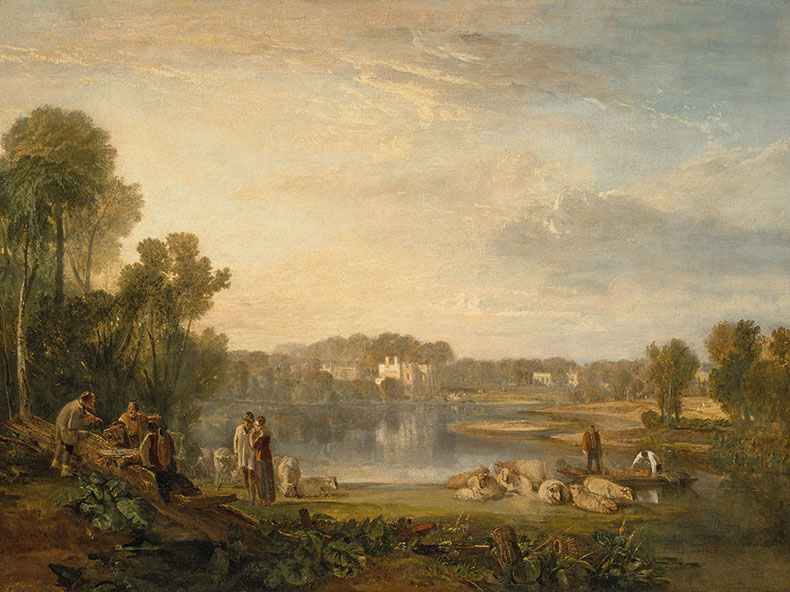
Pope’s Villa at Twickenham (1808), J.M.W. Turner. Christie’s New York (est. $5m–$7m)
Unlimited access from just $16 every 3 months
Subscribe to get unlimited and exclusive access to the top art stories, interviews and exhibition reviews.

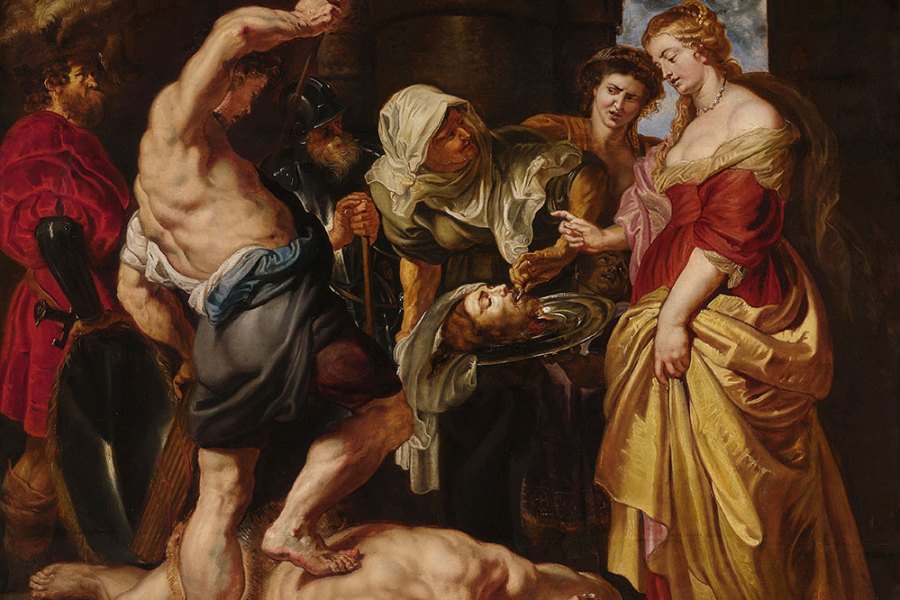
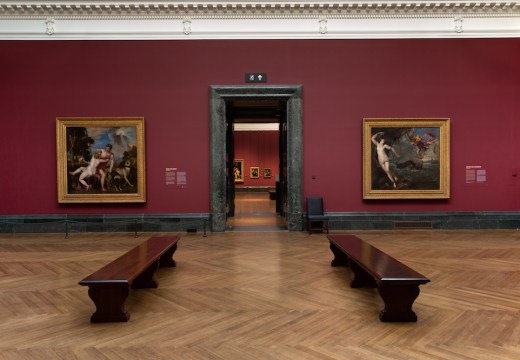
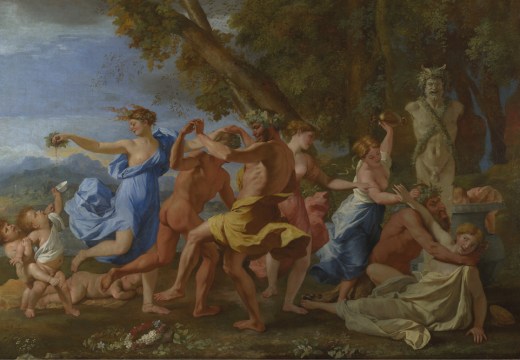
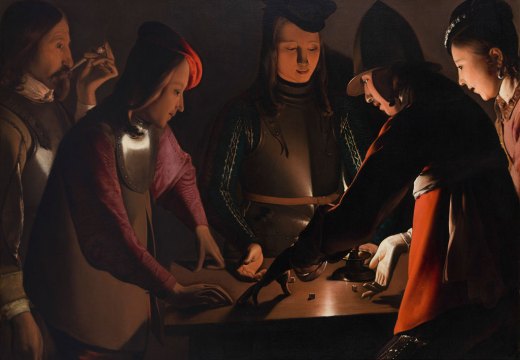









![Masterpiece [Re]discovery 2022. Photo: Ben Fisher Photography, courtesy of Masterpiece London](http://www.apollo-magazine.com/wp-content/uploads/2022/07/MPL2022_4263.jpg)
It’s time for the government of London to return to its rightful home